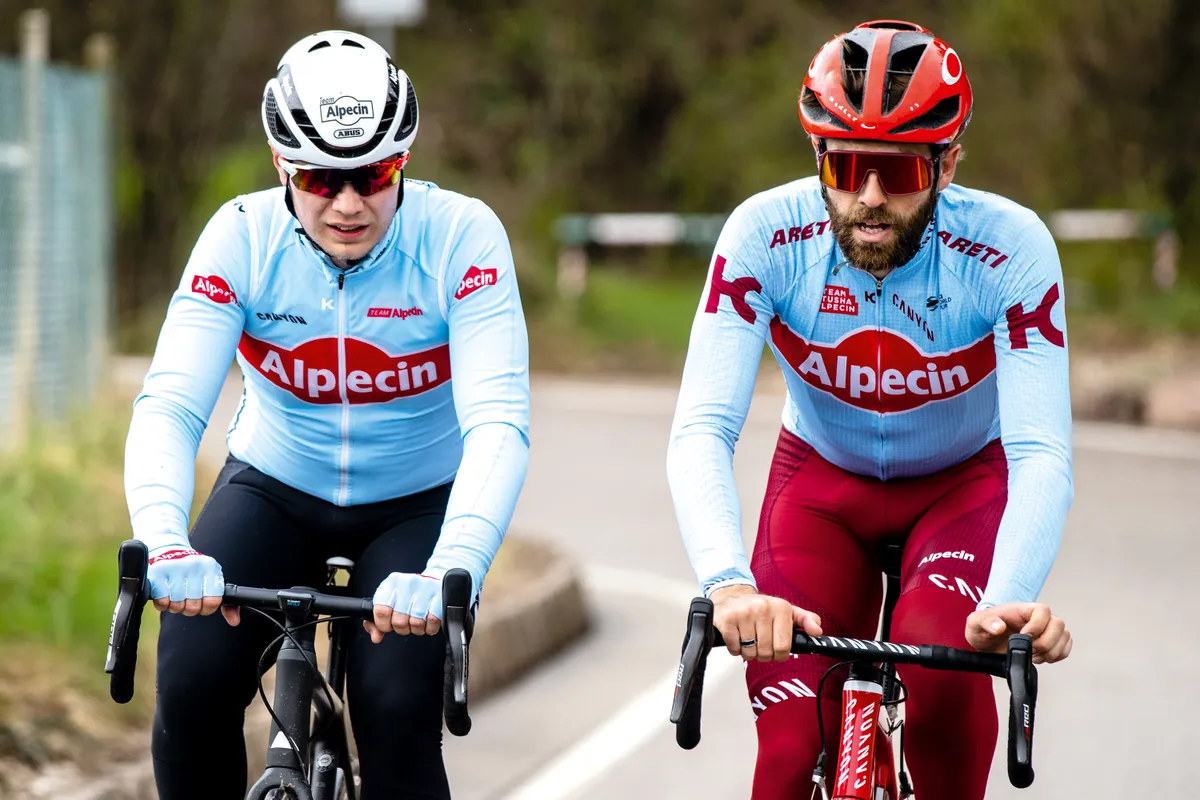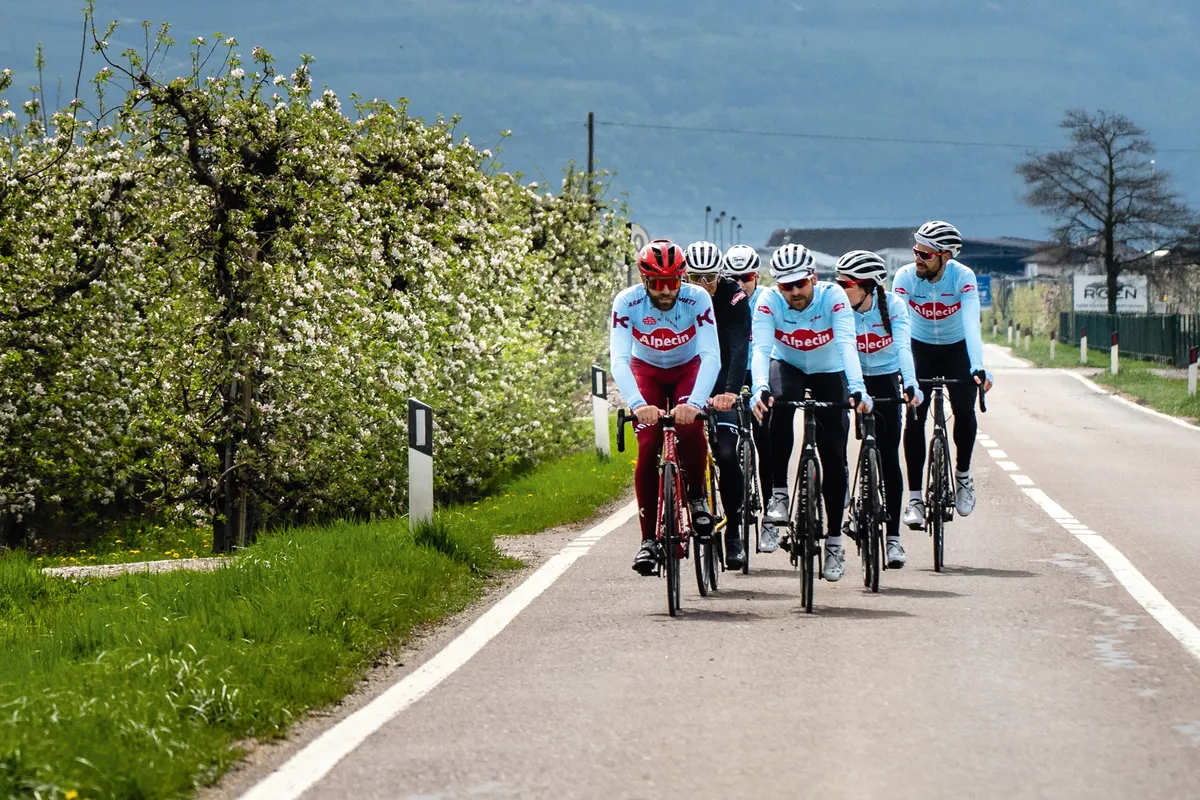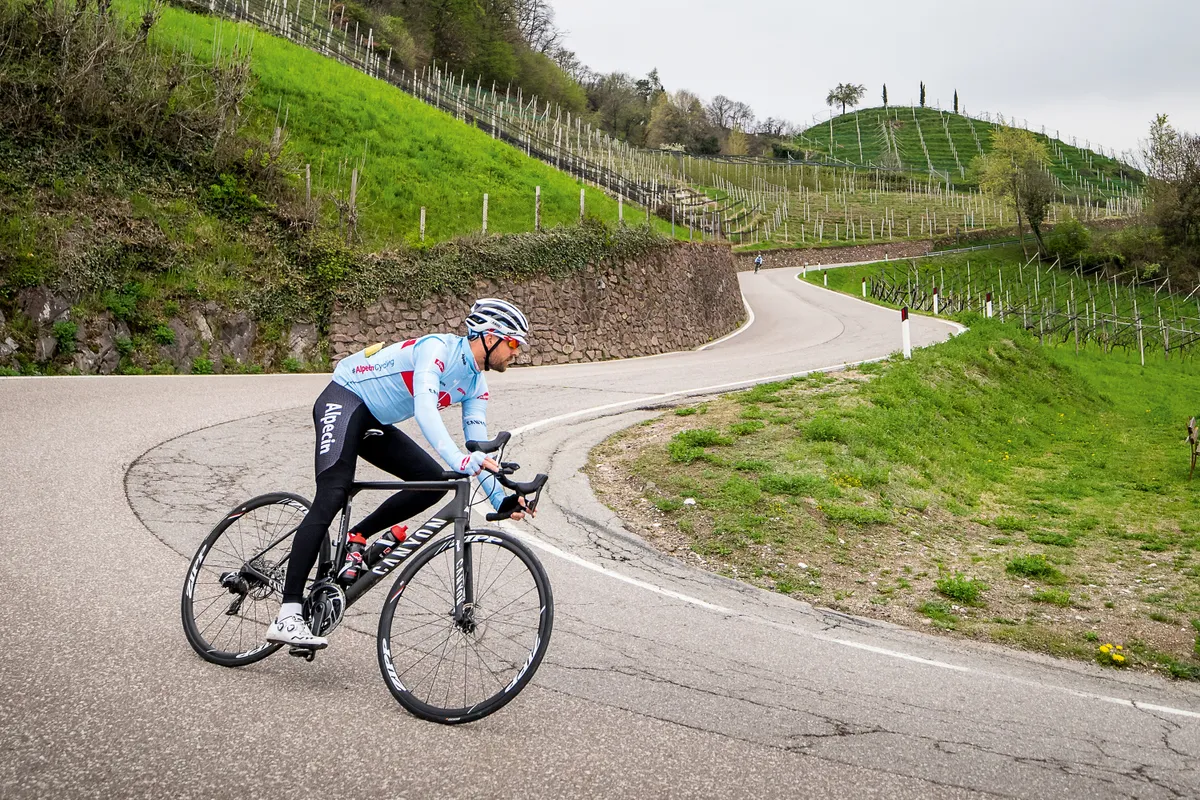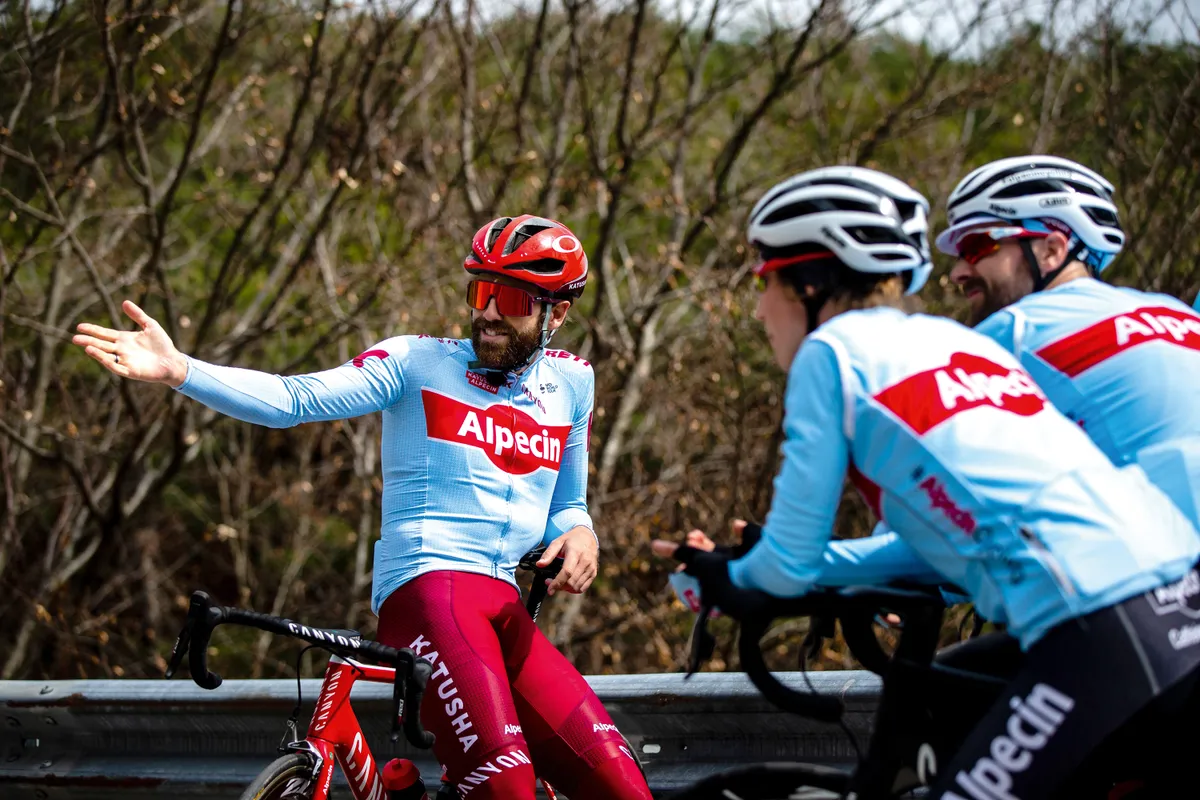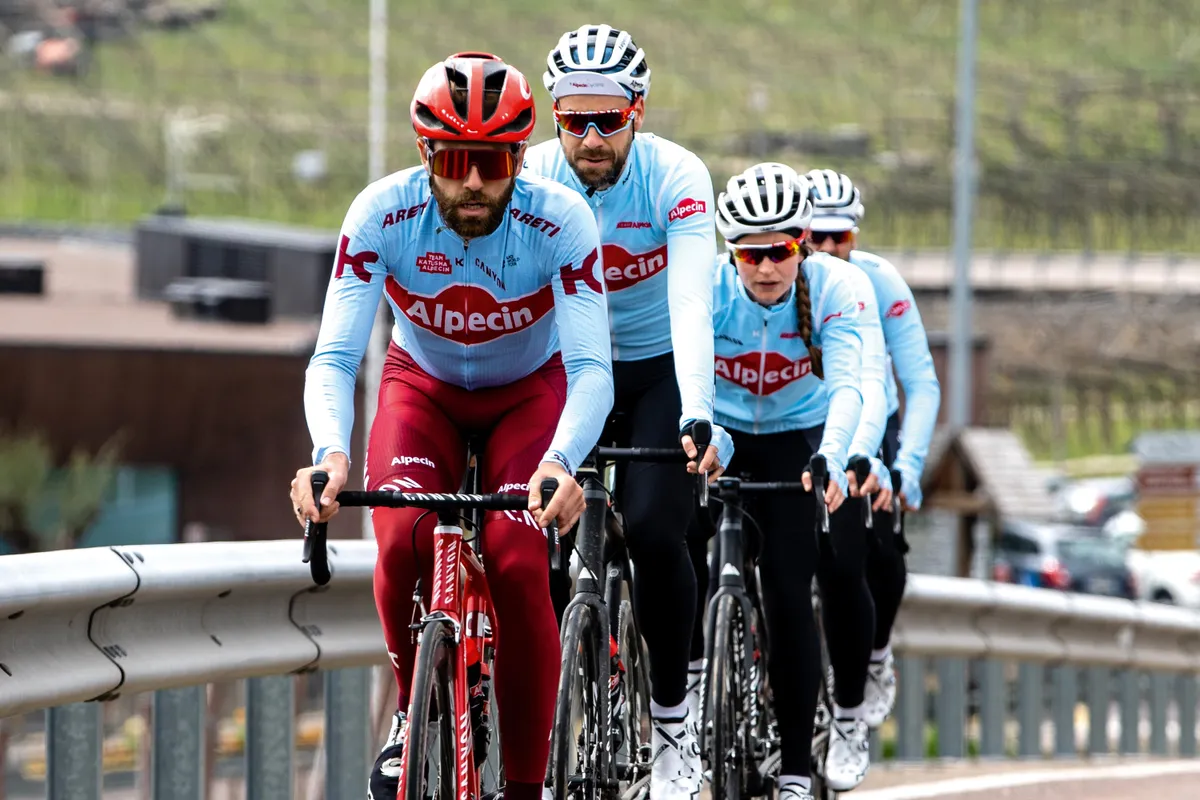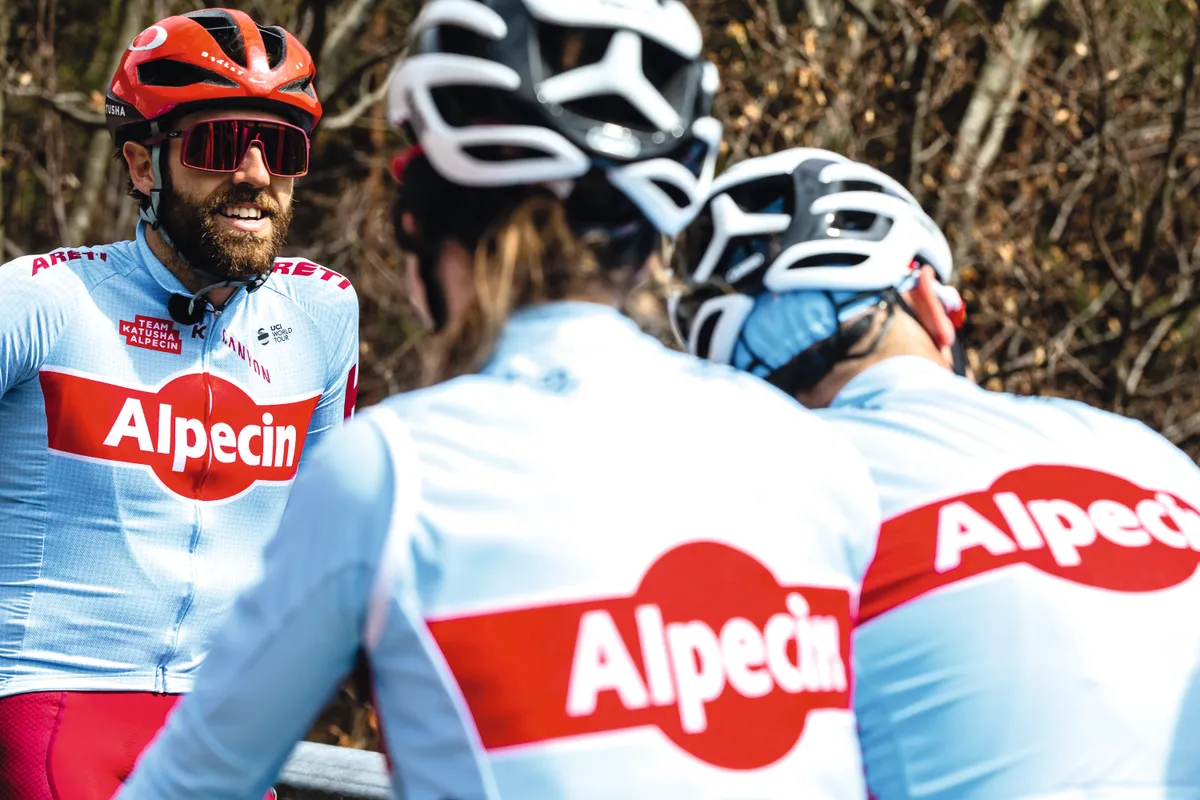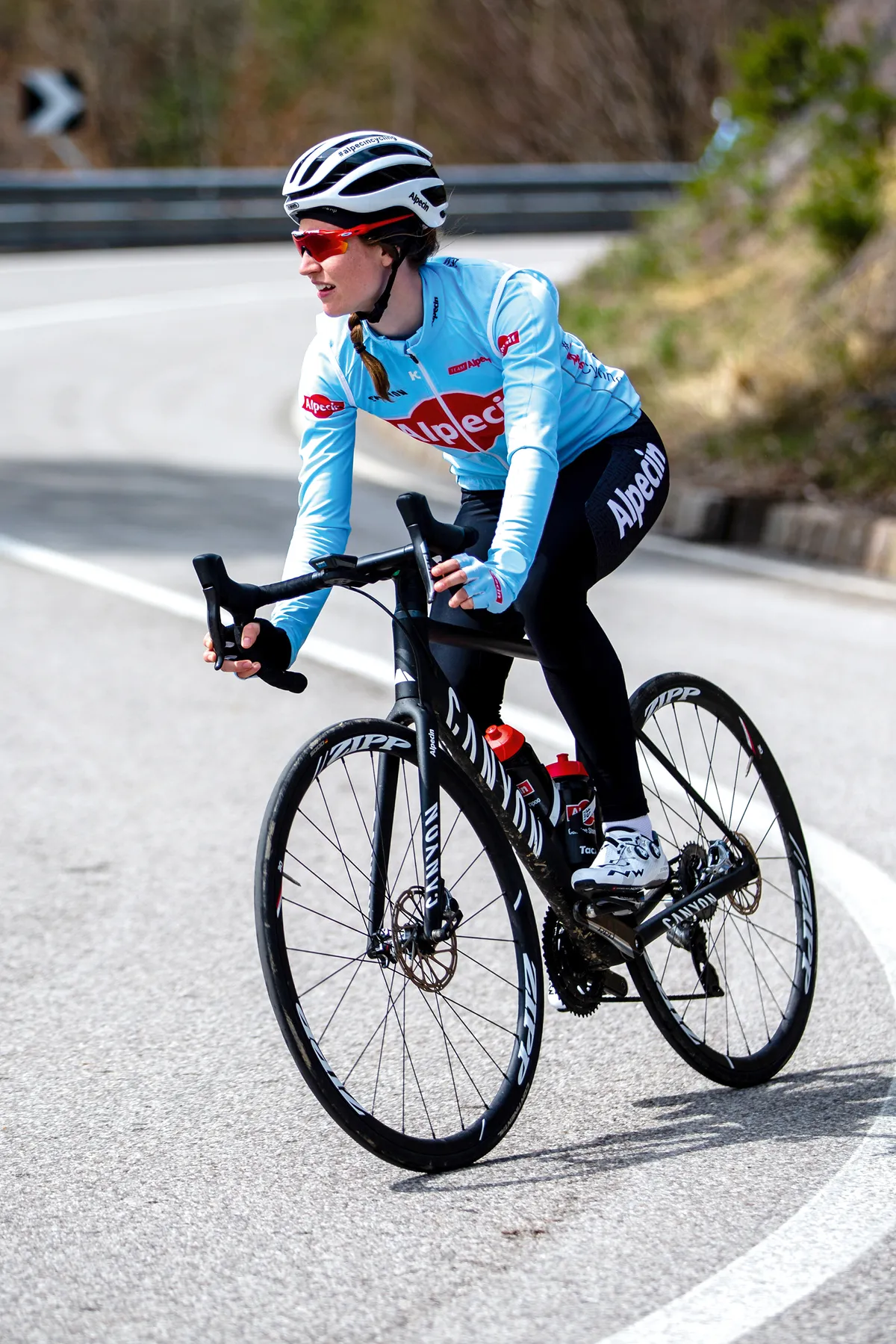After last month’s meet and greet in Germany, the team rendezvoused again, this time in Caldaro in the South Tyrol region of Italy, close to the Austrian border.
Barely a metre of road was pedalled in anger in Bielefeld, but that’d be more than rectified this time, with the riders subsisting on a week-long diet of long climbs.
With two big climb-heavy events coming up this summer, in the shape of the Fred Whitton Challenge and l’Etape du Tour, our three riders needed the conditioning. However, what goes up must come down and for some, therein lies the true fear of the mountains.
Reaching speeds north of 70km/h on long, switchback-filled descents either fills you with joy or dread. It’s an emotional business with few sitting on the fence. For Marie-Louise Kertzman, she falls very much on the side of dread.
While some riders revel in high speeds, getting a kick out of pushing their equipment to the limits, others lack the skills and confidence to squeeze any enjoyment out of what should be a respite from all that effort expended on the way up.
I had to admit I wasn’t just a slow descender. I was fearful too
For such riders, the valley can’t come soon enough. This isn’t something that bedevils amateurs – plenty of pro riders who do this for a living baulk at the speed of some of the most-skilled pros. Teams have been known to work with downhill coaches in recent years, realising this is an untapped area for improvement.
Take someone like Thibaut Pinot who, having worked hard on his descending, went from one of the more nervous riders in the peloton, to someone who can win the hilly Monument Giro di Lombardia.
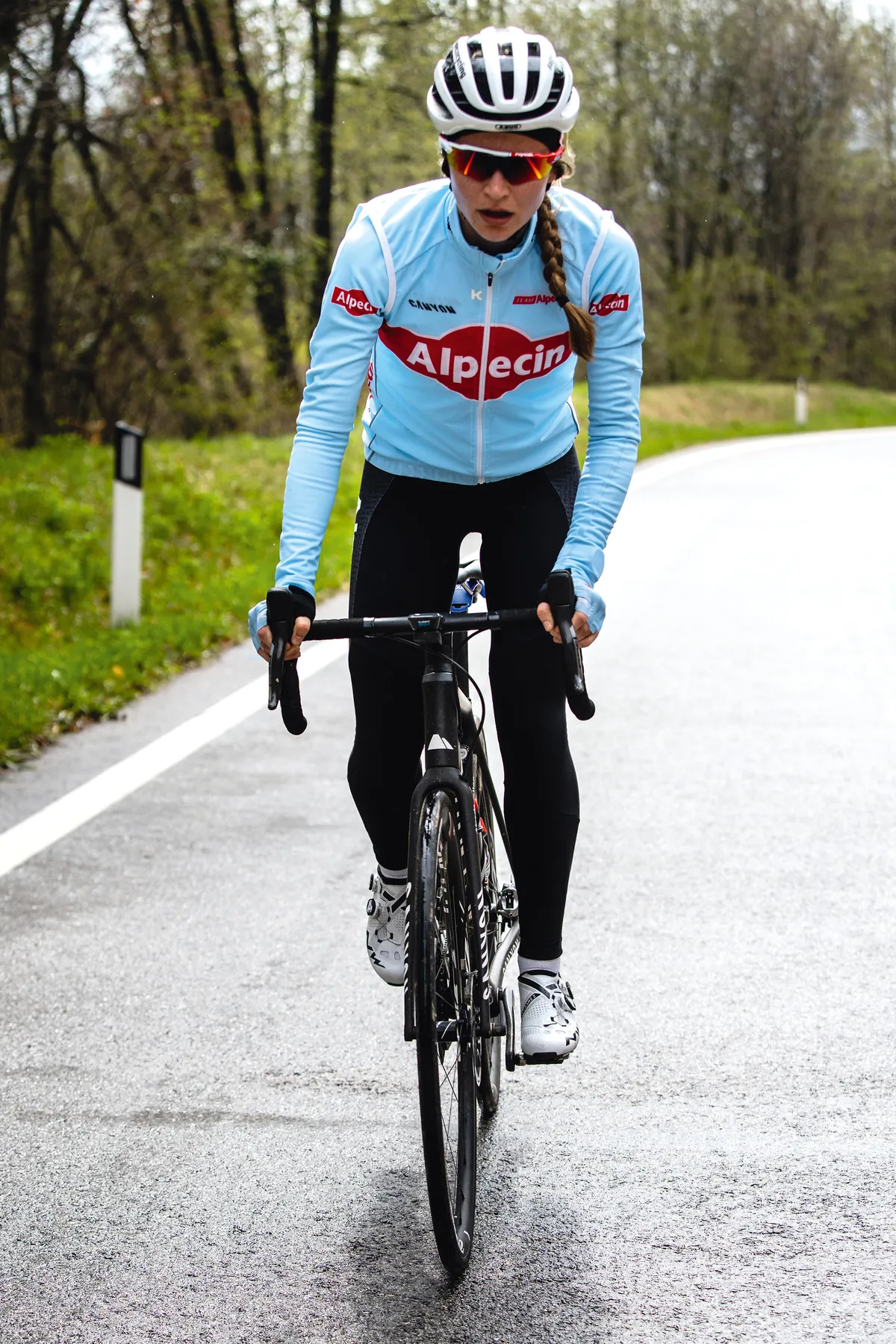
For Marie-Louise, her fear is built on sturdy foundations that are hard to crack, such as a lack of control at high speeds, and taking the wrong line around a corner and hurtling off the side of the mountain.
“I always thought I was simply a slow descender,” she says, “but after a couple of days on this training camp, where the long Italian descents dwarfed anything in the UK, I quickly realised it was more than that. The amazing views and glorious sweeping descents are ruined as soon as I pick up any speed. The first time I had to do it, I was shaking like a leaf and holding back tears, and I held my brakes the whole way down. I had to admit I wasn’t just a slow descender. I was fearful too.”
If you’re already fit, the gains you can make in your time spent climbing will be small compared to descending gains
Sound familiar? Anyone who has experienced this feeling will know what a vicious circle it can create. The nerves rise, the tension builds in your shoulders, spreading through your body. You’re jumpier on the brakes, your turning is like an oil tanker. It can be a thoroughly distressing situation.
“It came to a head on an admittedly tough descent,” she continues. “It was 14 percent in places with technical bends of every description. I found myself losing my nerve completely, screeching into a layby, sobbing and inconsolable.”
As we’ve already written, if you’re already fit, the gains you can make in your time spent climbing will be small compared to descending gains. It’s often an area that people overlook, sitting up on the descent and recovering from climbing exertions. But there’s huge potential in working on this weakness.
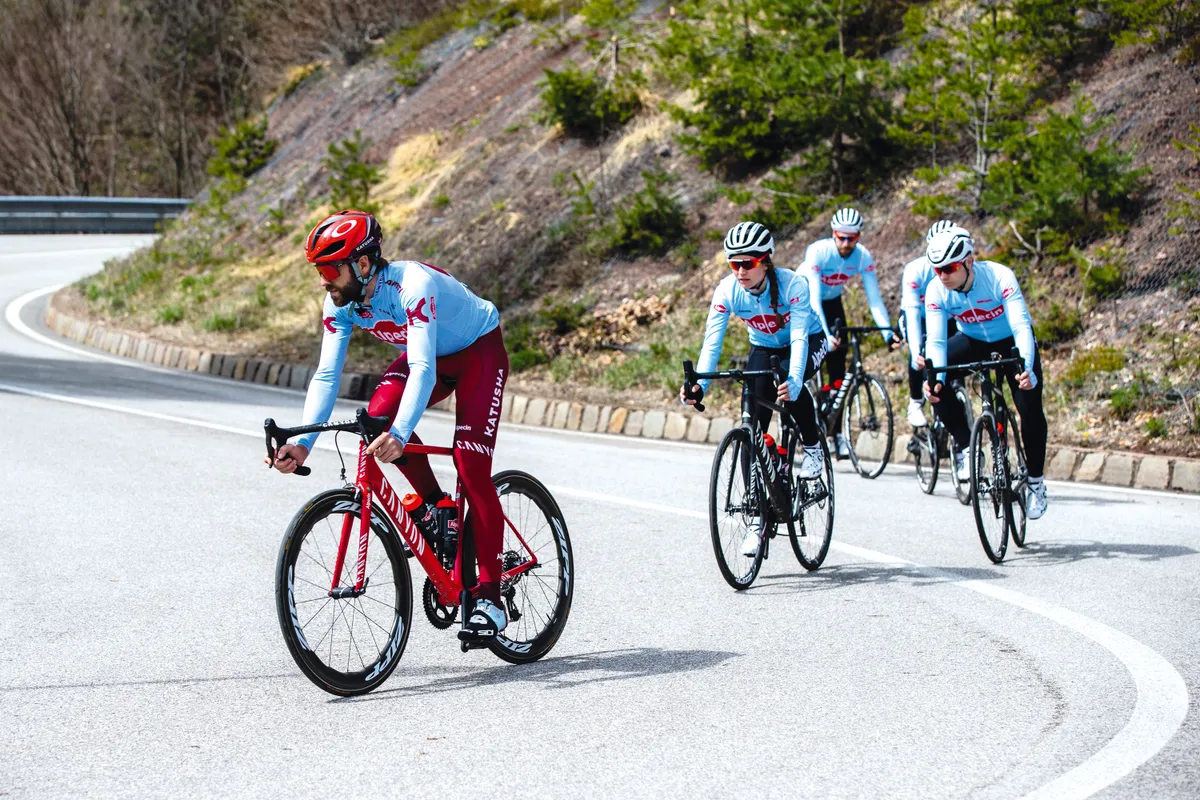
Team Alpecin spent a whole day focusing on descending, with the lesson led by no less than Grand Tour stage winner and former Hour Record holder Alex Dowsett of Team Katusha-Alpecin.
The location? The Mendel Pass, which climbs out of Caldaro, with an 8 percent average slope over its 14km. That’s pretty steep and, with a bunch of cracking switchbacks, it makes a perfect training ground to build technique and confidence.
There was just one problem: the weather wasn’t playing ball. The falling rain drained away with the confidence.
“Waking up to see the rain and a daunting lack of visibility was overwhelming” recalls Marie-Louise. “Taking the grown-up solution, I cried some more, hid in my bedroom and sent a text saying I wouldn’t be joining. Luckily for me, I have teammates who don’t take no for an answer and after much coaxing I made it outside, looking apprehensive on my bike, on the wheel of a pro, contemplating how I would survive the coming hours.
“During the climb Alex explained the mechanics of a steep hairpin, how you take the line wide and come into the apex, ‘straightening’ out the curve.
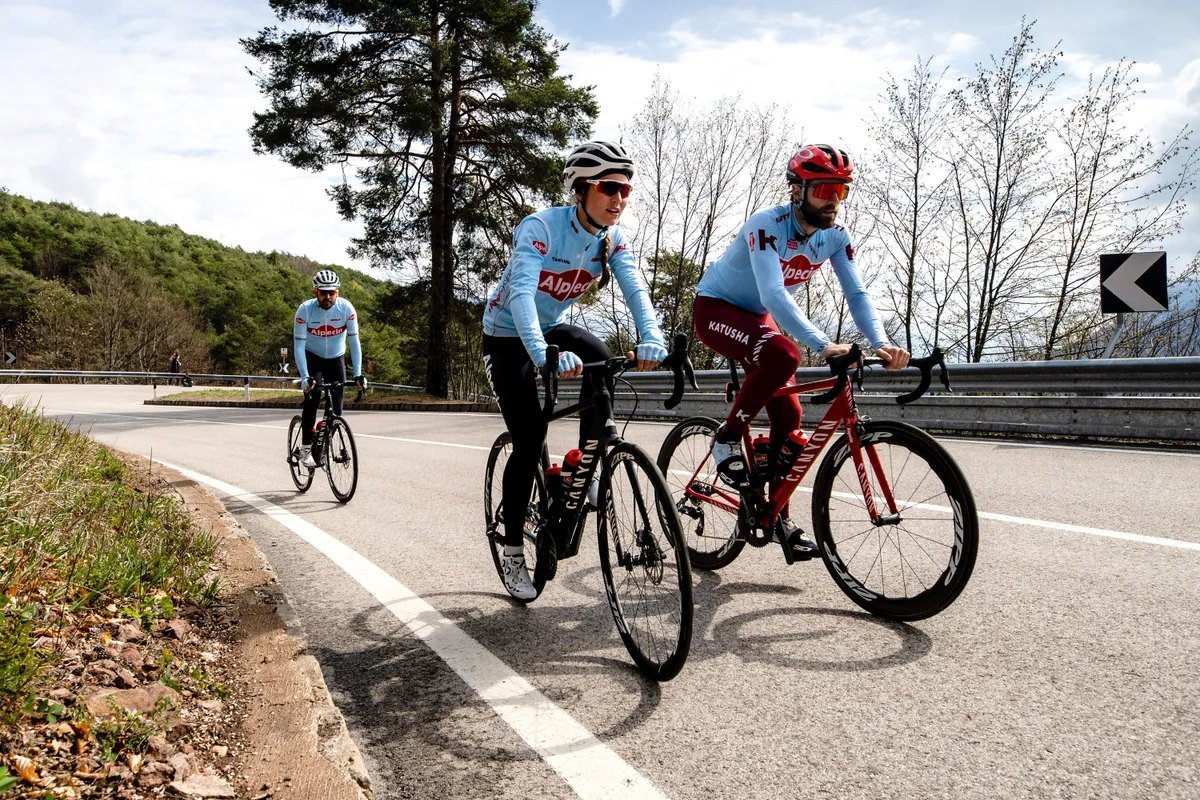
“He showed how and when to use each brake and finally when to let go completely. It was then possible to glide round the bend in an efficient, controlled and safe way. He guided me through the bend countless times, increasing the speed by tiny levels every time until, finally, I felt like I could take a bend without looking or feeling like Bambi on ice.”
For a nervy descender like Marie-Louise, following a pro through the correct line was invaluable and improvement was fast.
“It was definitely a breakthrough. But it’s one thing having a pro on your shoulder, in whose experience you know you can trust to get you down safely. On my own? That was a different question altogether.”
Practice makes perfect, though, so the following day the team set off up the Mendel Pass again to hone their new-found skills.
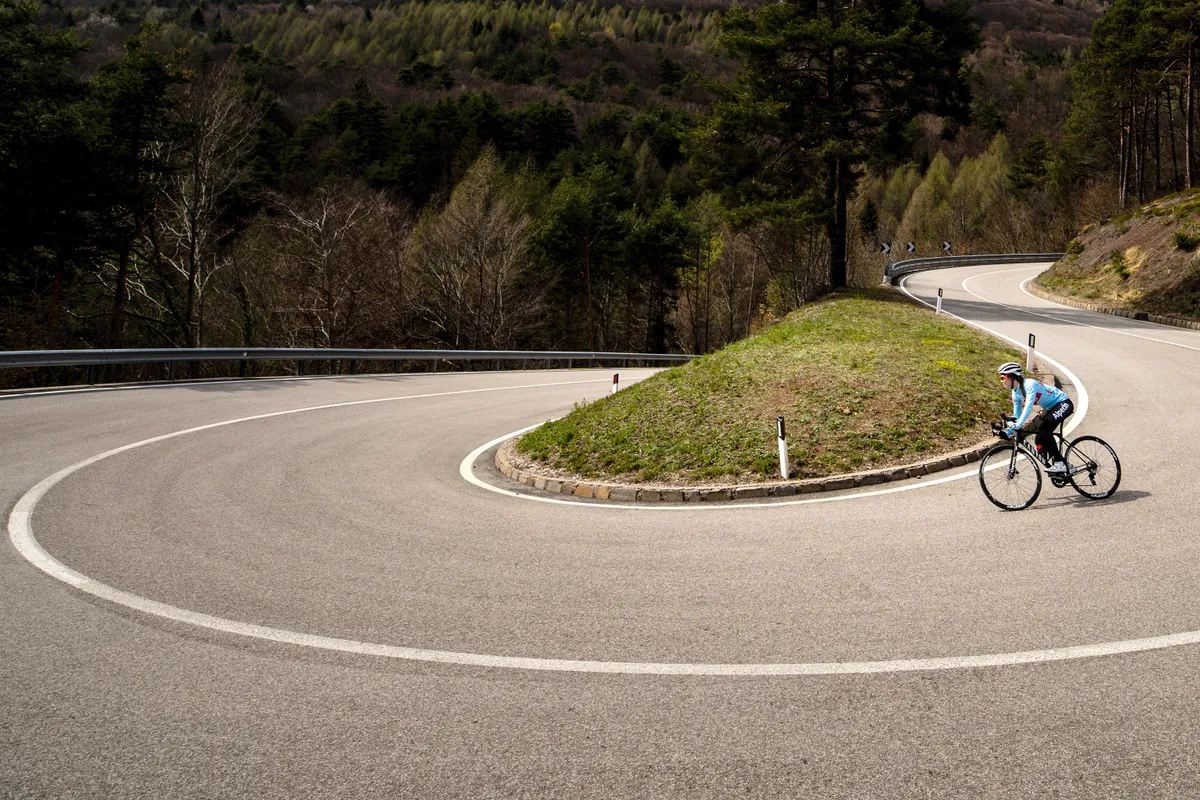
“At the top of the climb I replayed what I’d learnt throughout the week, reminding myself how this time, technique and skill was going to override fear. With that, I clipped in, pressed forward and was off. I let the others go in front – I was under no illusions that I would suddenly be fast!
"Control, confidence and a lack of fear was the goal. A teammate kindly waited, reminding me that this whole entire saga had been full of support and kind words.
“Coming into the first hairpin, something clicked. Brake, release, glide. Brake, release, glide. I was off. I may have spoken to myself sternly all the way down. I may have broken no records. But I was in control, and I was enjoying it! Twenty minutes later, I spun into the hotel, joyous and ecstatic. There were even tears. But this time it was happiness, not fear.”
Alex Dowsett breaks the corner down into three simple sections...
Zone 1
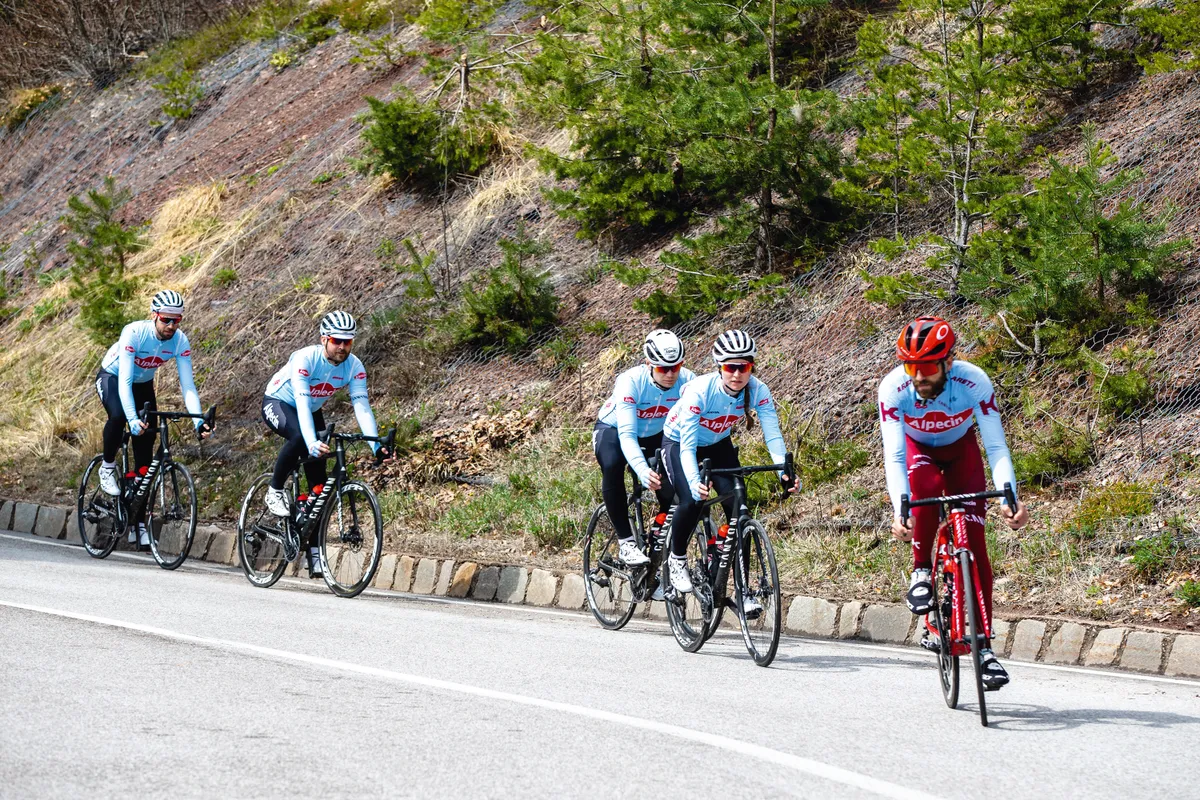
You want to be out as wide as possible on the road, make sure you are in a gear that allows you to leave the corner at an appropriate cadence. Before the bend, use your front brake to kill your speed to a controllable level.
Zone 2

Aiming for the apex of the corner, you should be off the brakes and leaning the bike over, and your weight should be on the outside pedal. Try pushing down ever so slightly through the pedal so that the chamois on your bib shorts expands as you take the pressure off the saddle. At this point you can feather the rear brake to kill more speed if needed.
Zone 3
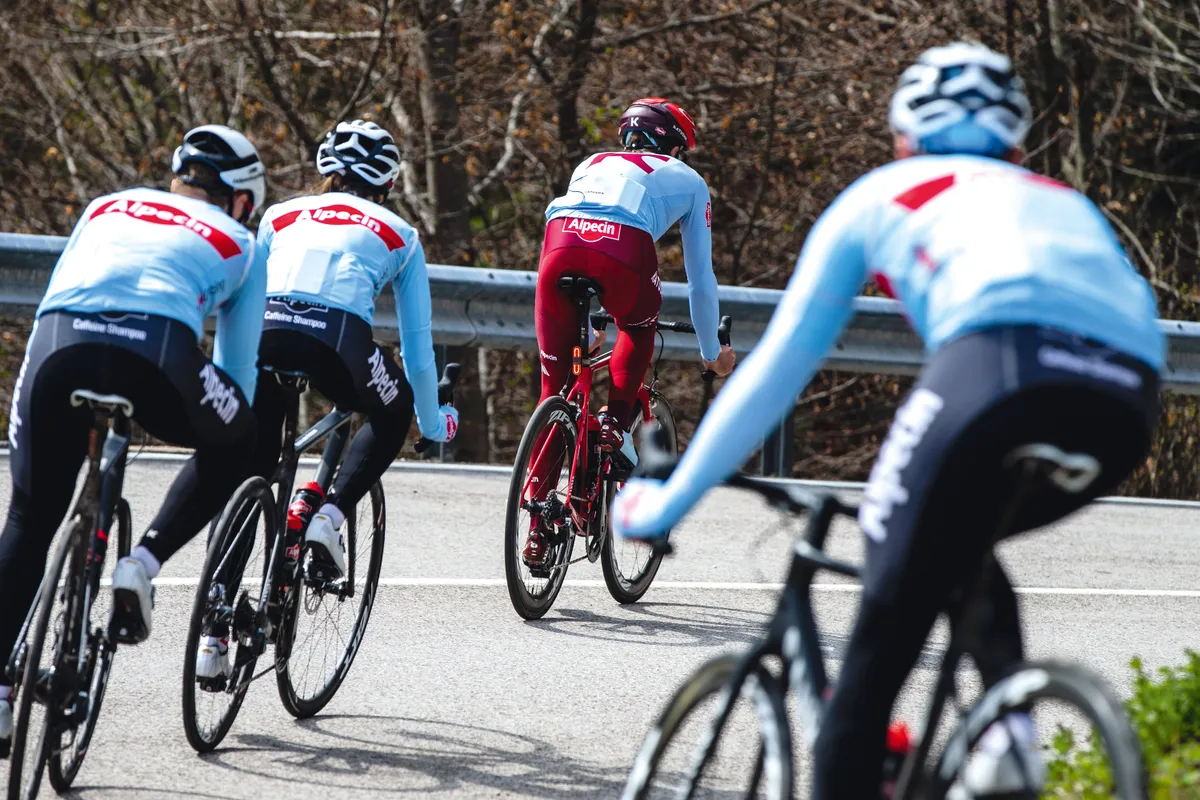
Leave the corner with enough speed that you are pushed out to the opposite side of the lane.
The riders on descending
Name: Michael Rammell
Age: 31
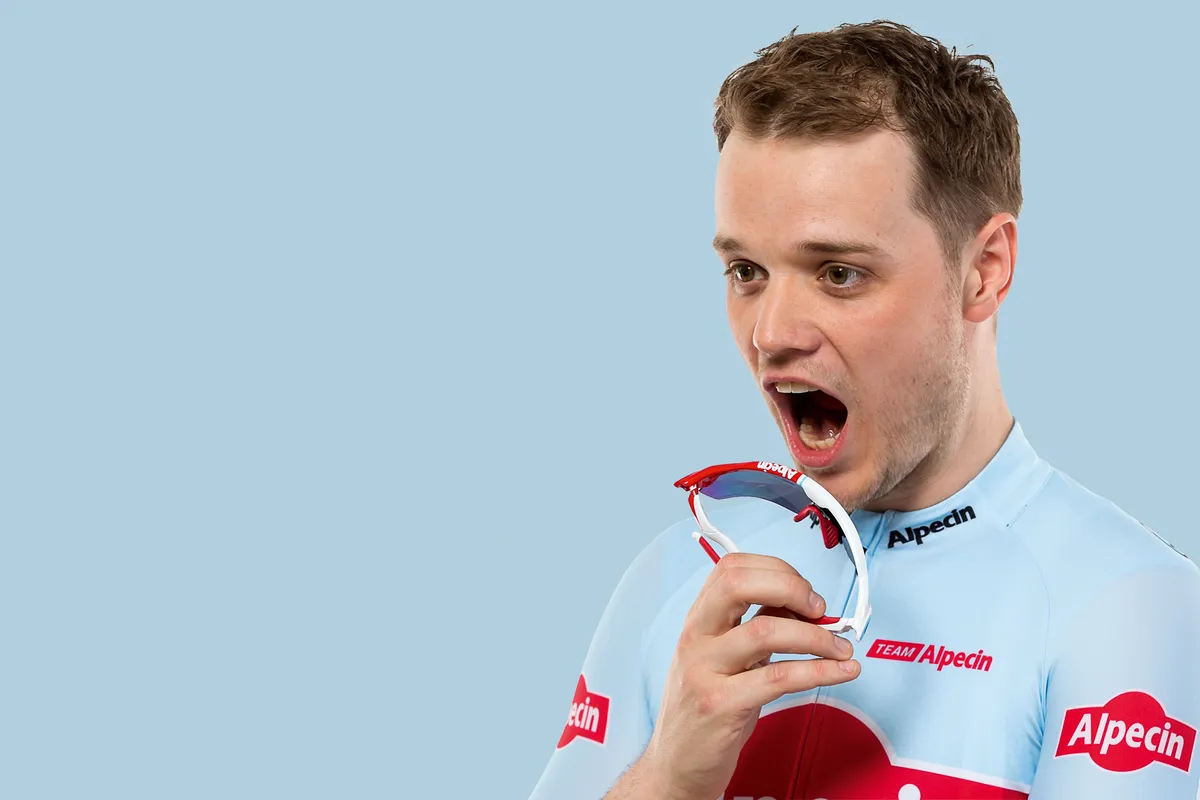
Embracing the descent and enjoying a smooth ride
“I’ve never had any issues with descending. It’s an area of riding I enjoy and look forward to. Having said that I’ve never had any technique training and I lapped up the chance to improve my skill and speed. Alex shared a tip that his dad – who was a successful racing driver in his own right – shared with him.
"The idea being that smooth cornering is a friend of speed: imagine that there is a pint balanced on the centre of your handlebars. The objective is to spill as little of that pint as possible and so a smooth corner is a fast corner. Sudden braking on entry to the corner or braking harshly during a corner will only disrupt that smoothness.
"That same excessive braking shows that you didn't approach the corner and adjust your speed accordingly to start with. This late and harsh braking is more likely to lock up tyres, which won't only slow you down but could also cause you to lose control and crash.”
Name: Nick Mayer
Age: 39
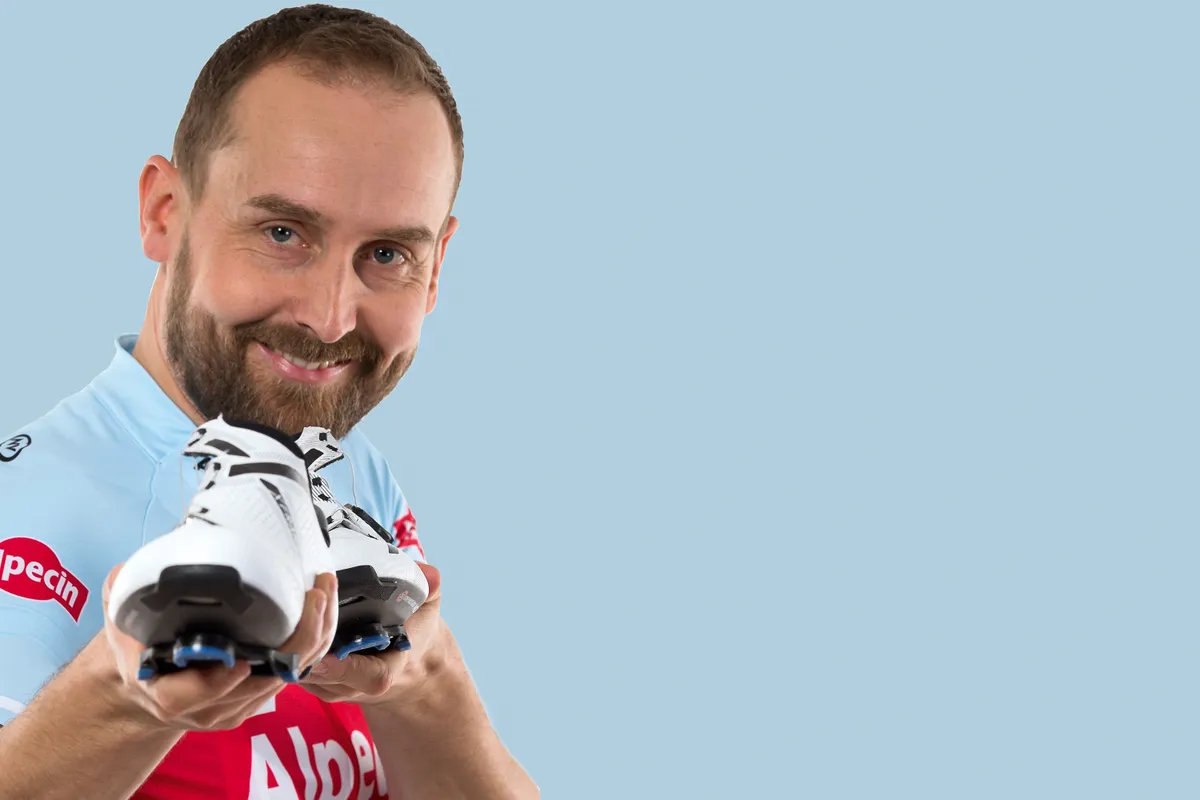
Happier on descent than ascent
“I would describe myself as a cautious descender; confident, but I’m not exactly a thrill seeker. But I do enjoy the downhill sections much more than climbs.
"Having dedicated time to focus on one area of riding really has helped improve my technique and encouraged me to push harder in the corners. Maintaining speed through the corners, leaning the bike over further and trusting the grip.
"I feel more confident and relaxed, now I just need to do the same for my climbing ability!”
